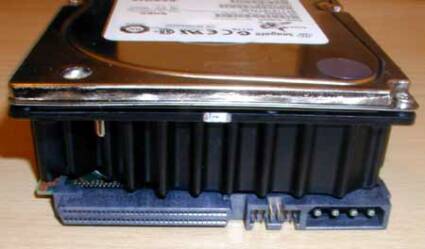Storage Giant: Seagate's Barracuda 180
Rotational Speed
Nowadays, the common speed for SCSI drives is 10,000 rpm, which allows for increased data transfer speed as well as reduced latency and access times. While the first generations of fast drives had to be cooled meticulously to maintain a safe temperature and ensure a longer lifetime, today's drives - just like this one - merely require adequate airflow to disperse any heat that is generated.
Temperature
As soon as a disk begins rotating, the friction increases the temperature of the hard drive. At 10,000 and 15,000 rpm, the friction is enough to increase drive temperatures up to 5 degrees Centigrade. The storage industry has developed different strategies to reduce friction and temperature considerably. Still, the amount of platters in a hard drive has a huge impact on a drive's temperature - the more platters you use, the more difficult it is to get rid of the heat.
The best example of higher temperature due to a larger amount of platters is the IBM DTLA DeskStar 75GXP . This family of drives is available at 15, 30, 45, 60 and 75 GB, using between 1 and 5 platters at 15 GB per platter. The 75 GB drive heats up faster and stays slightly warmer than, for example, a 15 or 30 GB model. From this, we can see that Seagate had to be careful when designing their Barracuda 180 with 12 platters, which is far more than the 75 GB IBM drive.
Get Tom's Hardware's best news and in-depth reviews, straight to your inbox.

Patrick Schmid was the editor-in-chief for Tom's Hardware from 2005 to 2006. He wrote numerous articles on a wide range of hardware topics, including storage, CPUs, and system builds.
